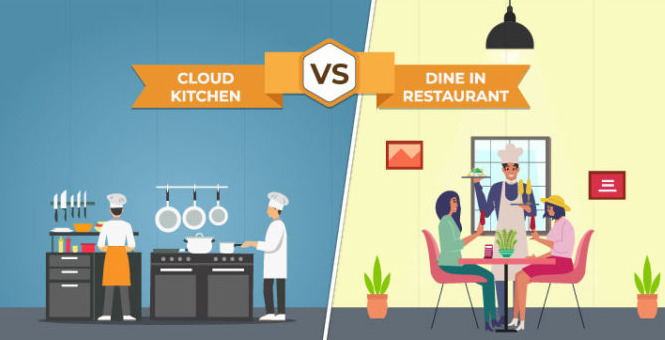
The debate between ghost kitchens and traditional restaurants is heating up in a rapidly changing food industry. Ghost kitchens—cloud or virtual kitchens—have exploded in popularity over the past few years, promising lower overhead and high delivery efficiency. But do they outperform the classic dine-in model? Or does traditional hospitality still reign supreme?
Chef Shajahan M Abdul, founder of Restro Consultants Pvt Ltd (RCPL), says, “Both models work—but only if they’re built with the right strategy. The best restaurant model is the one that fits your brand, market, and long-term vision.”
Let’s compare ghost kitchens and traditional restaurants to see which is most effective in today’s food landscape.
What Is a Ghost Kitchen?
A ghost kitchen operates without a physical storefront for dine-in. It focuses entirely on delivery and takeaway, often running multiple virtual brands from a single kitchen.
Chef Abdul describes it as “a restaurant without the tables—where the brand lives online, and the food lives in the hands of delivery riders.”
Ghost kitchens typically partner with aggregators like Swiggy or Zomato or develop in-house delivery systems.
What Is a Traditional Restaurant?
This is your classic dine-in format where guests walk in, order, eat, and enjoy hospitality. It could be a fine-dining experience, a casual café, a QSR, or a multi-cuisine outlet.
Chef Shajahan M Abdul notes, “The magic of traditional restaurants lies in the ambiance, service, and emotional experience—it’s about more than just food.”
Ghost Kitchens



Traditional Restaurants



RCPL has helped several first-time restaurateurs start with ghost kitchens as a low-risk entry point before expanding to dine-in spaces.
Ghost Kitchens



Traditional Restaurants


Restaurant consultants at RCPL emphasize that ghost kitchens do best in high-density areas with strong delivery demand, while dine-ins shine in locations with strong footfalls and local loyalty.
Ghost Kitchens


Traditional Restaurants


Chef Abdul explains, “In a traditional setting, you control every part of the customer journey—from the aroma to the final smile. That’s hard to replicate in a delivery-only model.”
Ghost Kitchens


Traditional Restaurants

Chef Shajahan M Abdul highlights that ghost kitchens are ideal for entrepreneurs looking to test markets quickly. RCPL often supports scalable kitchen rollouts across metros.
Ghost Kitchens
Reliant on third-party tech platforms
Traditional Restaurants
Hybrid Is the Future
Increasingly, restaurants are blending both models. For instance, a café may serve guests during the day and fulfill delivery orders via a cloud kitchen menu at night.
Chef Abdul shares, “It’s no longer a choice between one or the other. The strongest brands are those that do both—and do them well.”
RCPL has guided several brands in building hybrid setups where ghost kitchen efficiency supports dine-in brand identity.
Success Stories from RCPL
Final Thoughts from Chef Shajahan M Abdul
There’s no one-size-fits-all answer regarding ghost kitchens vs. traditional restaurants. The real question is: What do your customers want—and how can you serve them efficiently and memorably?
As Chef Shajahan M Abdul puts it:
“Ghost kitchens offer scale. Traditional restaurants offer soul. The smartest restaurateurs know how to balance both.”
With expert guidance from restaurant consultants at Restro Consultants Pvt Ltd (RCPL), you can build a model—or a hybrid of both—that works for your goals, your market, and your long-term brand journey.
Chef Abdul © Copyright 2024. All rights reserved.